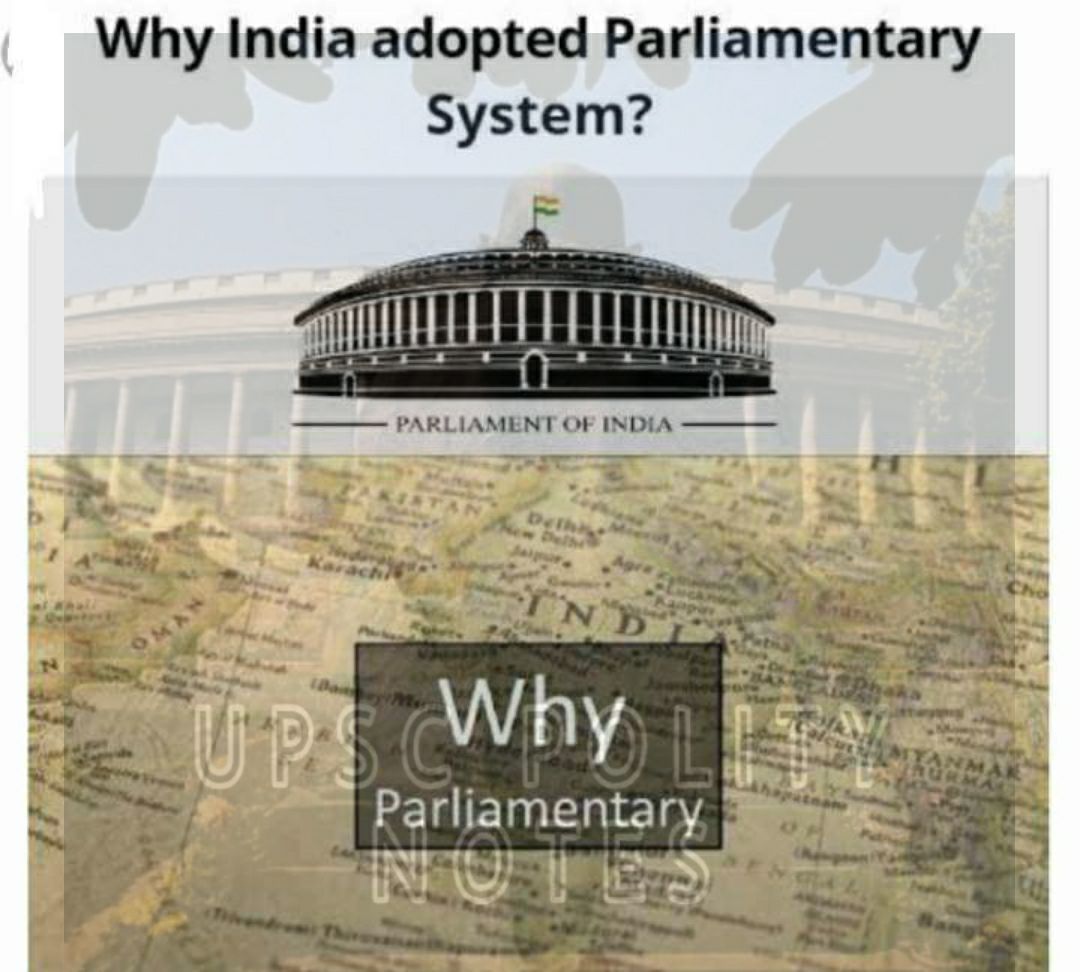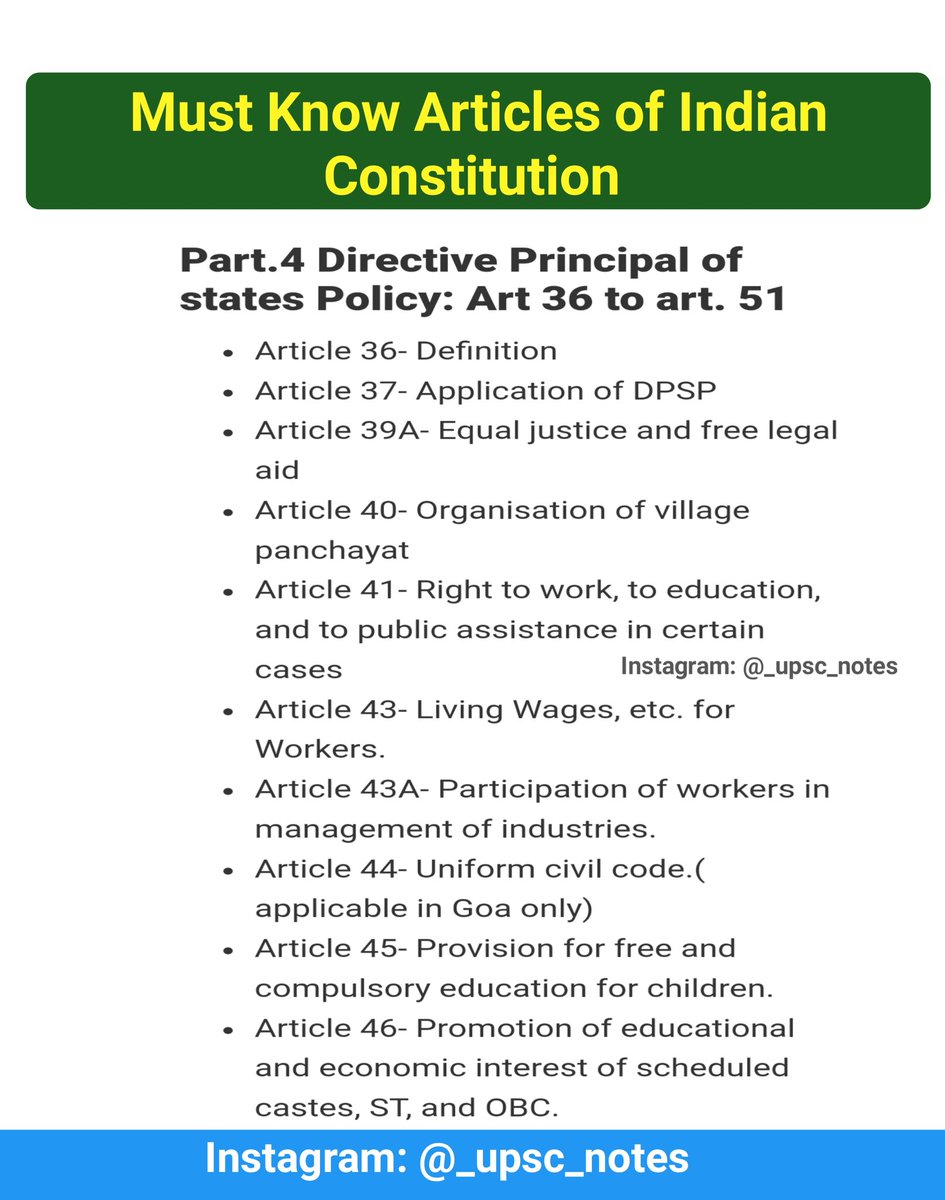
🔺️ REASONS FOR ADOPTING PARLIAMENTARY SYSTEM
1. Familiarity with the System
The Constitution-makers were somewhat familiar with the parliamentary system as it had been in operation in India during the British rule.
2. Preference to More Responsibility
1. Familiarity with the System
The Constitution-makers were somewhat familiar with the parliamentary system as it had been in operation in India during the British rule.
2. Preference to More Responsibility

The Draft Constitution in recommending the parliamentary system of Executive has preferred more responsibility to more stability.’
3. Need to Avoid Legislative–Executive Conflicts
The framers of the Constitution wanted to avoid the conflicts between
3. Need to Avoid Legislative–Executive Conflicts
The framers of the Constitution wanted to avoid the conflicts between
the legislature and the executive which are bound to occur in the presidential system prevalent in USA.
4. Nature of Indian Society
• India is one of the most heterogeneous States and most complex plural societies in the world.
4. Nature of Indian Society
• India is one of the most heterogeneous States and most complex plural societies in the world.
• Hence, the Constitution-makers
adopted the parliamentary system as it offers greater scope for giving representation to various section, interests and regions in the government.
#UPSC_Notes
adopted the parliamentary system as it offers greater scope for giving representation to various section, interests and regions in the government.
#UPSC_Notes
• • •
Missing some Tweet in this thread? You can try to
force a refresh


















